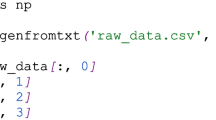Abstract
We have examined EMG-movement relations in two-joint planar arm movements to determine the influence of interactional torques on movement coordination. Explicitly defined combinations of elbow movements (ranging from 20 to 70°) and wrist movements (ranging from 20 to 40°) were performed during a visual, step-tracking task in which subjects were specifically required to attend to the initial and final angles at each joint. In all conditions the wrist and elbow rotated in the same direction, that is, flexion-flexion or extension-extension. Elbow movement kinematics were only slightly influenced by motion about the wrist. In contrast, the trajectory of the wrist movement was significantly influenced by uncompensated reaction torques resulting from movement about the elbow joint. At any given wrist amplitude, wrist movement duration increased and peak velocity decreased as elbow amplitude increased. In addition, as elbow amplitude increased, wrist movement on-set was progressively delayed relative to this elbow movement. Surprisingly, the changes between joint movement onsets were not accompanied by corresponding changes between agonist EMG onsets at the elbow and wrist joints. The mean difference in onset times between elbow and wrist agonists (22–30 ms) remained unchanged across conditions. In addition, a basic pattern of muscle activation that scaled with movement amplitude was observed at each joint. Phasic agonist activity at the wrist and elbow joints remained remarkably similar across conditions and thus the changes in joint movement onset could not be attributed to changes in the motor commands. Rather, the calculated torques from the averaged data showed that the difference in timing of joint movement onsets was influenced by joint interactional torques. These findings suggest that during simple two-joint planar movements of the elbow and the wrist joint, the central nervous system does not alter the basic motor commands at each joint and as a result the actual trajectory of each joint is determined by interactional torques.
Similar content being viewed by others
References
Abend WK, Bizzi E, Morasso P (1982) Human arm trajectory formation. Brain 105:331–348
Accornero N, Berardelli A, Argenta M, Manfredi M (1984) Two joints ballistic arm movements. Neurosci Lett 46:91–95
Atkeson CG, Hollerbach JM (1985) Kinematic features of unrestrained vertical arm movements. J Neurosci 5:2318–2330
Benecke R, Meinck H-M, Conrad B (1985) Rapid goal-directed elbow flexion movements: Limitations of the speed control system due to neural constraints. Exp Brain Res 59:470–477
Brown SH, Cooke JD (1981) Amplitude and instruction dependent modulation of movement-related electromyogram activity in humans. J Physiol (Lond) 316:97–107
Brown SH, Cooke JD (1984) Initial agonist burst duration depends on movement amplitude. Exp Brain Res 55:523–527
Cooke JD, Brown SH (1990) Movement-related phasic muscle activation. II. Generation and functional role of the triphasic pattern. J Neurophysiol 63:465–472
Cooke JD, Brown SH (1994) Movement-related phasic muscle activation. III. The duration of phasic agonist activity initiating movement. Exp Brain Res 99:473–482
Dempster WT (1955) In: Gowitzke BA, Milner M (eds) Understanding the scientific bases of human movement, 2nd edn, 1988. Williams and Wilkins, Baltimore
Flanders M (1991) Temporal patterns of muscle activation for arm movements in three-dimensional space. J Neurosci 11:2680–2693
Hallett M, Marsden CD (1979) Ballistic flexion movements of the human thumb. J Physiol (Lond) 294:33–50
Hallett M, Shahani BT, Young RR (1975) EMG analysis of stereotyped voluntary movements in man. J Neurol Neurosurg Psychiatr 38:1154–1162
Hollerbach JM (1990) Planning of arm movements. In: Osherson DN, Kosslyn SM, Hollerbach JM (eds) Visual cognition and action: an invitation to cognitive science. MIT Press
Hollerbach JM, Flash T (1982) Dynamic interactions between limb segments during planar arm movements. Biol Cybern 44:67–77
Hong D, Corcos DM, Gottlieb GL (1994) Task dependent patterns of muscle activation at the shoulder and elbow for unconstrained arm movements. J Neurophysiol 71:1261–1265
Kaminski T, Gentile AM (1986) Joint control strategies and hand trajectories in multijoint pointing movements. J Mot Behav 18:261–278
Kaminski T, Gentile AM (1989) A kinematic comparison of single and multijoint pointing movements. Exp Brain Res 78:547–556
Karst GM, Hasan Z (1991) Timing and magnitude of electromyographic activity for two-joint arm movements in different directions. J Neurophysiol 66:1594–1604
Koshland GF, Hasan Z (1994) Selection of muscles for initiation of planar, three-joint arm movements with different final orientations of the hand. Exp Brain Res 98:157–162
Koshland GF, Gerilovsky L, Hasan Z (1991) Activity of wrist muscles elicited during imposed or voluntary movements about the elbow joint. J Mot Behav 23:91–100
Lacquaniti F, Soechting JF (1982) Coordination of arm and wrist motion during a reaching task. J Neurosci 2:399–408
Morasso P (1981) Spatial control of arm movements. Exp Brain Res 42:223–227
Soechting JF, Lacquaniti F (1981) Invariant characteristics of a pointing movement in man. J Neurosci 1:71–720
Virji-Babul N, Cooke JD, Brown SH (1994) Effects of gravitational forces on single joint arm movements in humans. Exp Brain Res 99:338–346
Wadman WJ, Denier van der Gon JJ, Derksen RJ (1980) Muscle activation patterns for fast goal-directed arm movements. J Hum Mov Stud 6:19–37
Author information
Authors and Affiliations
Rights and permissions
About this article
Cite this article
Virji-Babul, N., Cooke, J.D. Influence of joint interactional effects on the coordination of planar two-joint arm movements. Exp Brain Res 103, 451–459 (1995). https://doi.org/10.1007/BF00241504
Received:
Accepted:
Issue Date:
DOI: https://doi.org/10.1007/BF00241504




